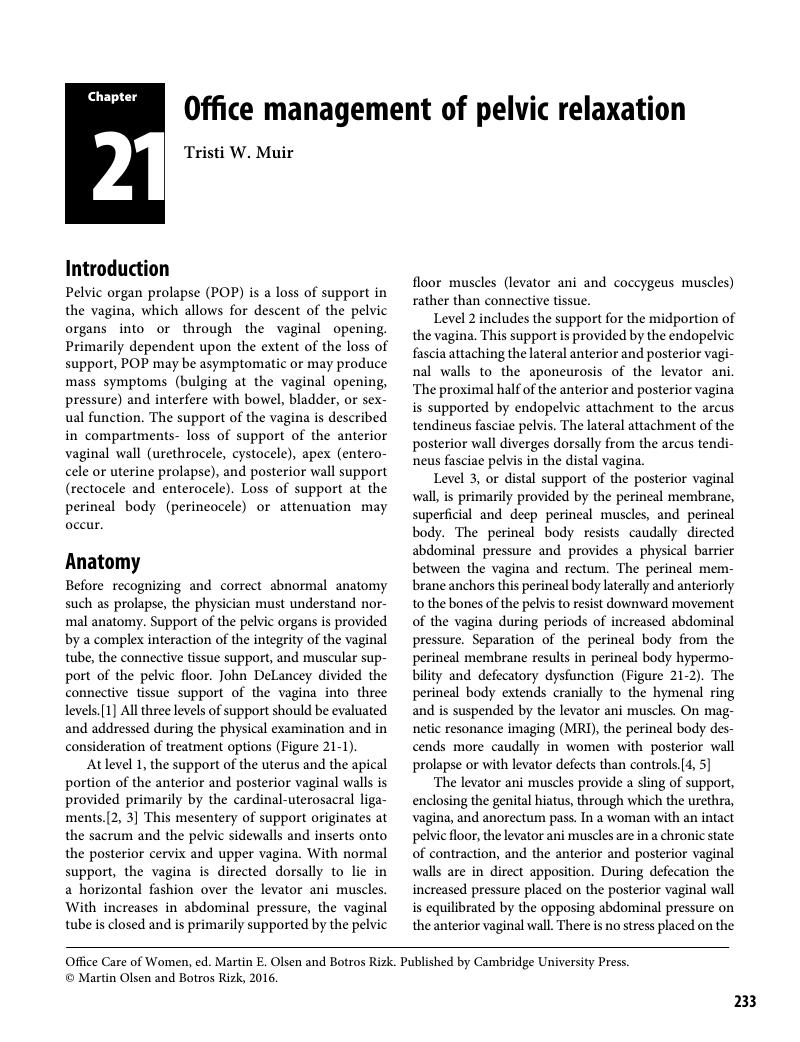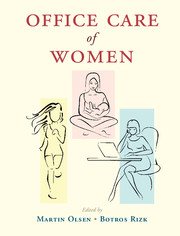Book contents
- Office Care of Women
- Office Care of Women
- Copyright page
- Dedication
- Contents
- Contributors
- Preface
- Section I Health promotion
- Section II Office interventions
- Section III Pregnancy
- Section IV Gynecology
- Chapter 14 Office care of the pediatric-adolescent gynecologic patient
- Chapter 15 Amenorrhea
- Chapter 16 Abnormal uterine bleeding
- Chapter 17 Office care of sexually transmitted infections
- Chapter 18 Office management of pelvic pain and dyspareunia
- Chapter 19 Office management of pelvic masses
- Chapter 20 Office management of incontinence
- Chapter 21 Office management of pelvic relaxation
- Chapter 22 Vulvovaginal disease
- Chapter 23 Office care of patients with leiomyomata of the uterus
- Chapter 24 Sexual dysfunction
- Chapter 25 Office management of endometriosis
- Section V Reproductive endocrinology and infertility
- Section VI Nongynecologic conditions
- Index
- References
Chapter 21 - Office management of pelvic relaxation
from Section IV - Gynecology
Published online by Cambridge University Press: 05 May 2016
- Office Care of Women
- Office Care of Women
- Copyright page
- Dedication
- Contents
- Contributors
- Preface
- Section I Health promotion
- Section II Office interventions
- Section III Pregnancy
- Section IV Gynecology
- Chapter 14 Office care of the pediatric-adolescent gynecologic patient
- Chapter 15 Amenorrhea
- Chapter 16 Abnormal uterine bleeding
- Chapter 17 Office care of sexually transmitted infections
- Chapter 18 Office management of pelvic pain and dyspareunia
- Chapter 19 Office management of pelvic masses
- Chapter 20 Office management of incontinence
- Chapter 21 Office management of pelvic relaxation
- Chapter 22 Vulvovaginal disease
- Chapter 23 Office care of patients with leiomyomata of the uterus
- Chapter 24 Sexual dysfunction
- Chapter 25 Office management of endometriosis
- Section V Reproductive endocrinology and infertility
- Section VI Nongynecologic conditions
- Index
- References
Summary

- Type
- Chapter
- Information
- Office Care of Women , pp. 233 - 241Publisher: Cambridge University PressPrint publication year: 2016



